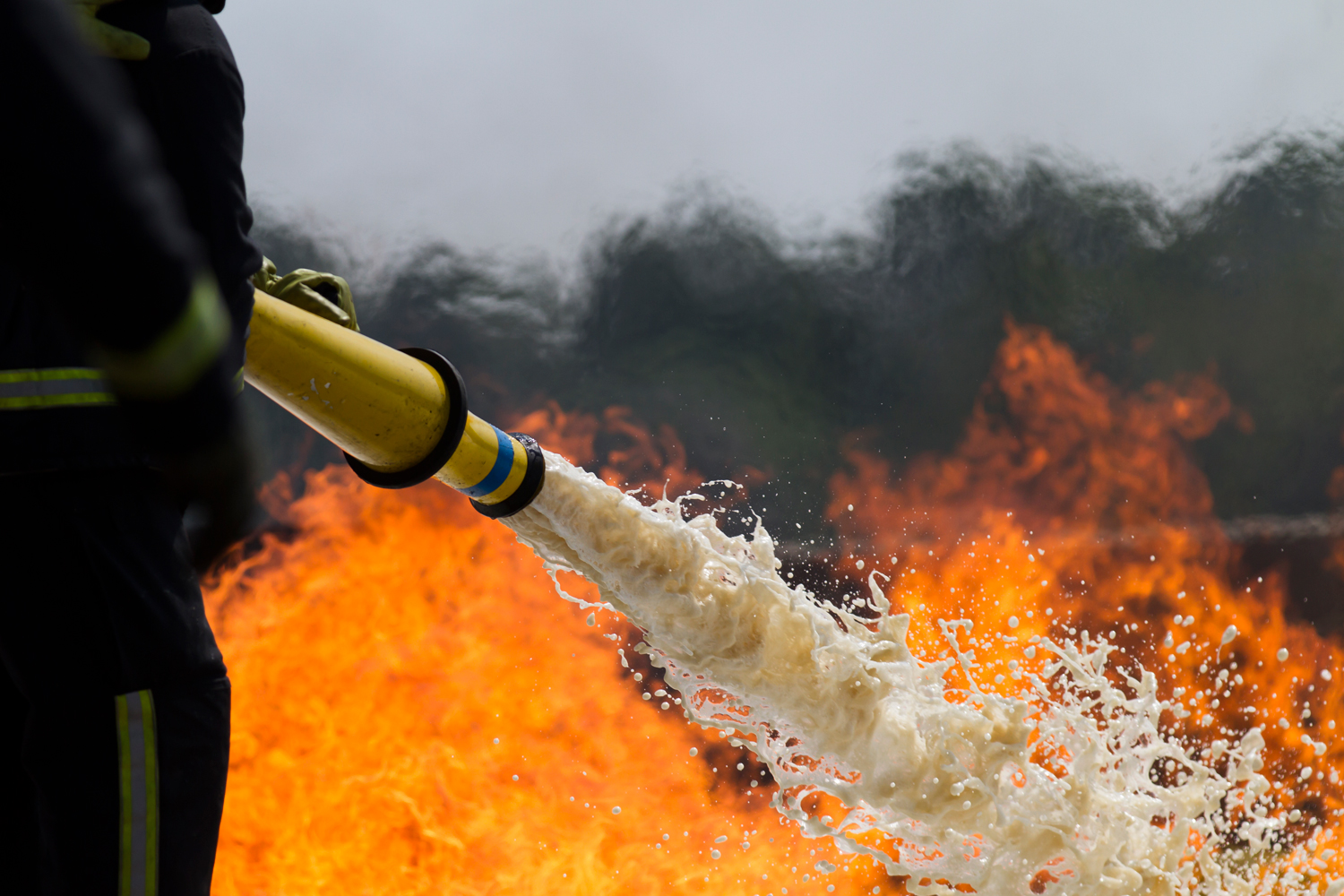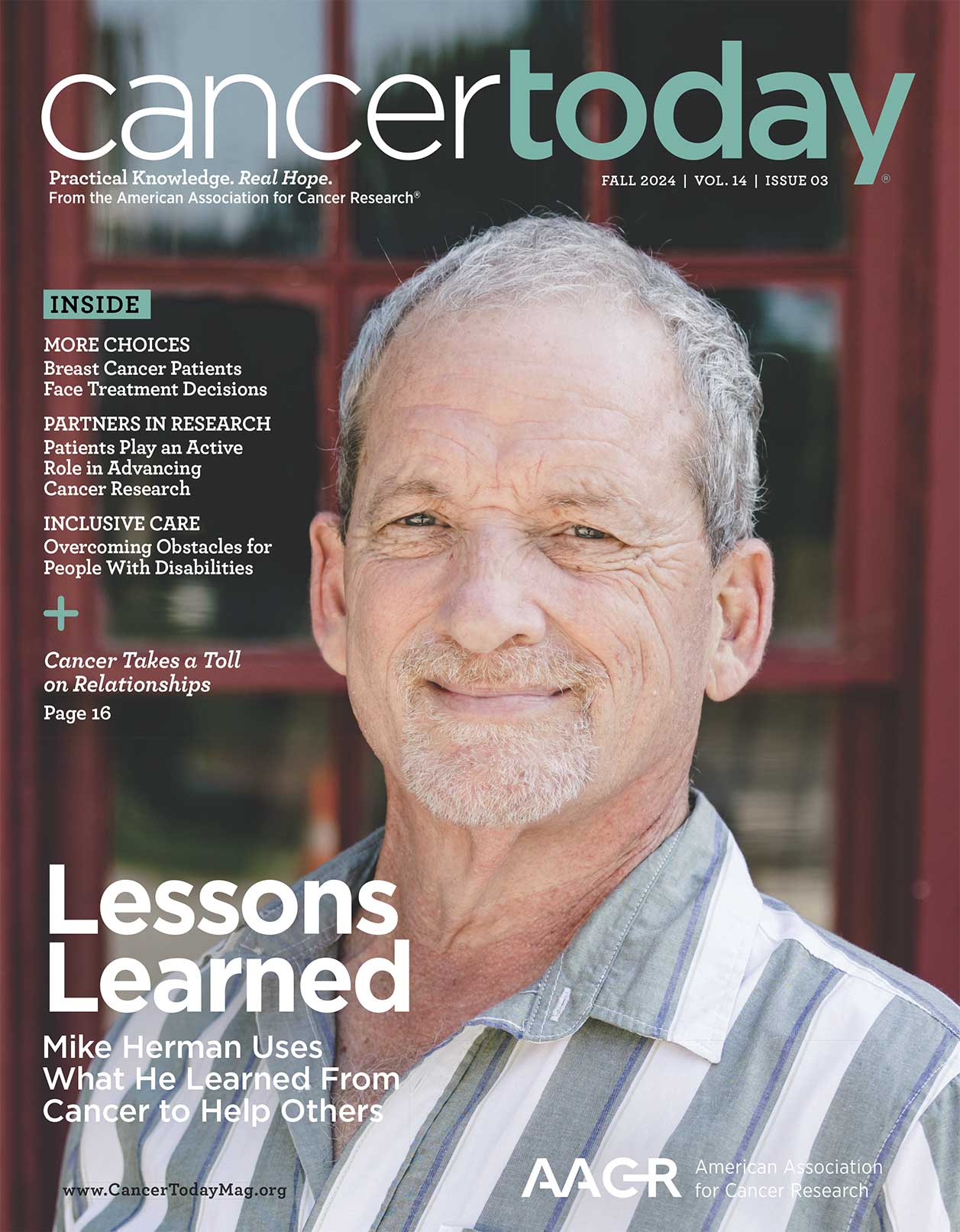Every week, the editors of Cancer Today magazine bring you the top news for cancer patients from around the internet. Stay up to date with the latest in cancer research and care by subscribing to our e-newsletter.
Study Links Testicular Cancer Among Military Personnel to ‘Forever Chemicals’
Some research suggests firefighters, both military and civilian, have been diagnosed with testicular cancer at higher rates than people in most other occupations. In the past, researchers have speculated that the presence of perfluoroalkyl and polyfluoroalkyl substances, or PFAS, could be driving the increase. PFAS, frequently called “forever chemicals,” are found in frothy white fire-retardant foam that was routinely used at military installations and airports for their ability to extinguish petroleum-based fires. Congress has ordered the Department of Defense to stop using all PFAS-containing foams by October 2024. Research published in Environmental Health Perspectives in July found evidence to suggest an association between PFAS and testicular cancer in military personnel. The federal study findings, which were reported Aug. 9 in KFF Health News, used banked blood drawn from more than 1,000 Air Force servicemen between 1988 and 2017, and found airmen who were firefighters had elevated levels of PFAS in their bloodstreams compared with airmen who were not firefighters. Airmen with testicular cancer had higher serum levels of PFAS than those who had not been diagnosed with cancer, the KFF Health News article notes. PFAS, which are also used in many consumer goods, do not break down in the environment and can accumulate in the human body. The article explains that nearly all Americans have PFAS in their blood, exposed primarily by groundwater, drinking water, soil and foods. The increased concentrations in military firefighters point to the commonly used fire retardant, which military service members were told was harmless and just like “soap and water,” KFF Health News reports.
Late-stage Diagnoses Rose During Pandemic, Especially for Certain Groups
A study published in the August issue of Lancet Oncology notes that stage IV cancer diagnoses were 7% more likely by the end of 2020 compared with the previous year. The study findings, which were reported Aug. 4, in STAT, were based on a nationwide registry that captures over 70% of all cancer cases in the U.S. The study also found that medically underserved individuals were hit especially hard, including Hispanic and Asian American and Pacific Islander groups, uninsured people, Medicare-insured individuals under 65, and people living in socioeconomically deprived areas. Even after hospitals opened doors to patients for nonemergency health issues besides COVID-19, people were hesitant to come back, noted Hannah Hazard-Jenkins, director of the West Virginia University Cancer Institute, who was not involved with this study. “Which is worse: dealing with the potential of getting COVID-19 with such a high fatality rate versus dealing with a concern for a cancer diagnosis? That was a real struggle for patients,” Hazard-Jenkins said in the STAT article.
Older Women With Breast Cancer at Increased Risk for Unnecessary Treatment
A study published Aug. 8 in the Annals of Internal Medicine found that large numbers of American women ages 70 to 85 who are being screened for breast cancer are at risk for undergoing treatment for a cancer that would not cause them any harm—referred to as overdiagnosis. “The breast cancers are real, true cancers under the microscope, but they would have laid dormant in a person’s body and never caused symptoms,” said Ilana Richman, the lead author of the study and an assistant professor of medicine at the Yale School of Medicine, in a CNN article. “We wouldn’t have known about that had we not gone looking.” The study looked at 54,635 women 70 or older who had recently been screened for breast cancer. Researchers estimated that 31% of women ages 70 to 74 were potentially overdiagnosed. Women who got screened at older ages had an even more pronounced risk. Among women 75 to 84, an estimated 47% were potentially overdiagnosed. Women 85 and older were the age group most likely to be overdiagnosed, at 54%. Breast cancer diagnosis peaks among women in their 70s, according to the American Cancer Society. And the U.S. Preventive Services Task Force does not recommend screening in women over age 75. Breast cancer risk decreases as women age into their 80s, partly “because women die of other health conditions instead like heart disease or other cancers,” Richman said, in the CNN article.
Cancer Today magazine is free to cancer patients, survivors and caregivers who live in the U.S. Subscribe here to receive four issues per year.





